Turkmen cockroach lives in areas from Central Asia to North Africa, in the Caucasus. It is not a synanthropic species, but in some places it is able to occupy human housing. The Latin name Shelfordella tartara, also known as the Turkmen cockroach, Turkestan, Central Asian, tartar, rusty, red runner, Turkmen. It is cultivated as food for insectivorous representatives of the fauna. But unlike marble cockroach, does not creep on vertical surfaces, which reduces the chances of escaping from the terrarium.
How does a lifestyle look
Adult individuals do not grow more than 3 cm. Sexual dimorphism is pronounced:
- males of red, brown-orange color, have thin yellow wings, can fly;
- the color of the females is dark brown, black with cream patches, a light streak is visible along the edges of the short reduced wings, females are wider than males.
Nymphs do not have wings, the front of the body is brown or copper, which reminds Madagascans, the back is black. Photos of Turkmen cockroaches are presented below.
- Turkmen
- Turkmen
- Breeding cockroaches
On a note!
Conflicting information is found regarding male flight performance. Authoritative foreign sources (Wiki) indicate that a Turkestan cockroach is capable of flying. On Russian-speaking resources, they are inclined to believe that Shelfordella tartara can only actively swing their wings, creating the illusion of flight.
In the natural environment they live under stones, in abandoned wet hollows. Often they are observed in the area near water bodies. Activity is shown at night. The full life cycle does not exceed 9 months. In the imago stage, they live 4-5 months.
Breeding goals
Turkmen cockroaches feed the hedgehogs, spiderslizards mantis, reptiles and other insectivores. The advantages of feed insects are several:
- thin chitinous cover, low defensive ability make them a desirable prey for predators;
- high protein content: 76% in young nymphs, 53% in nymphs of 3 ages, as well as a concentration of vitamin B 12;
- unlike the popular food - crickets, Turkmen cockroaches are silent;
- lack of a specific smell;
- fast reproduction.
Among the shortcomings of breeding Turkmen cockroaches, a long period of incubation of the edema is noted - up to 1.5 months and the growth time of nymphs - 4 months.
Important!
Despite its rich mineral, vitamin and nutrient composition, Turkmen cockroaches contain little calcium and vitamin A. If exotic pets are fed exclusively with cockroaches, vitamin deficiency will provoke a reduction in life expectancy and a decrease in the rate of reproduction.
They breed Turkmen for their pets or for extra income. The average price of one individual is 3 rubles. Implemented through the Internet, pet stores, thematic groups in VK, OK.
Home Content
For breeding you will need a terrarium, at least 5 males and 15 females. Turkmen cockroaches love moderate humidity, temperature 27 - 29 ° С and darkness. If the temperature is below normal, put a thermal mat under the bottom of the charge. In spraying, irrigation of the tank with water is not necessary.
Arrangement of insectarium
The size of the insectarium is determined by the size of the colony. For 300 - 400 individuals, a capacity of 45 liters is sufficient. It can be an aquarium, a glass or plastic container. The cage is placed in the shade, it is advisable to prevent sunlight from entering it.
- Turkmen
- Turkmen
- Cockroach content
The bottom layer of up to 1.5 cm is covered with bark, sawdust, coconut substrate, perlite, cat-like wood filler, vermiculite.
On a note!
The presence of a substrate is optional, many breeders do not use it. But it helps to stabilize moisture in the insectarium and not build an additional incubator.
Cardboard, egg trays, hollow paper forms, branches are used as shelters for Turkmen cockroaches. This decor will be necessary for nymphs during molting, as the process proceeds safely when the young individuals are upright. If the old cover is dropped in a horizontal position, the risk of injury is great.
To ensure ventilation, the insectarium is covered with a lid with small holes, a fine mesh. Experienced breeders recommend nylon.
Periodically carry out cleaning in the cage, replacing trays. Since this species does not eat the skins after molting, the corpses are hooked up by the orderlies - dark-skinned alfitobiuses. If you believe the reviews, they can replace them madagascar cockroach.
Eating tartar in captivity
A drinking bowl is not an obligatory element. It is enough to give the shelf-fruit juicy fruits and greens. But if there is a need for it, they make sure that individuals do not choke. For these purposes, foam rubber, expanded clay, and vermiculite are placed at the bottom of the drinkers.
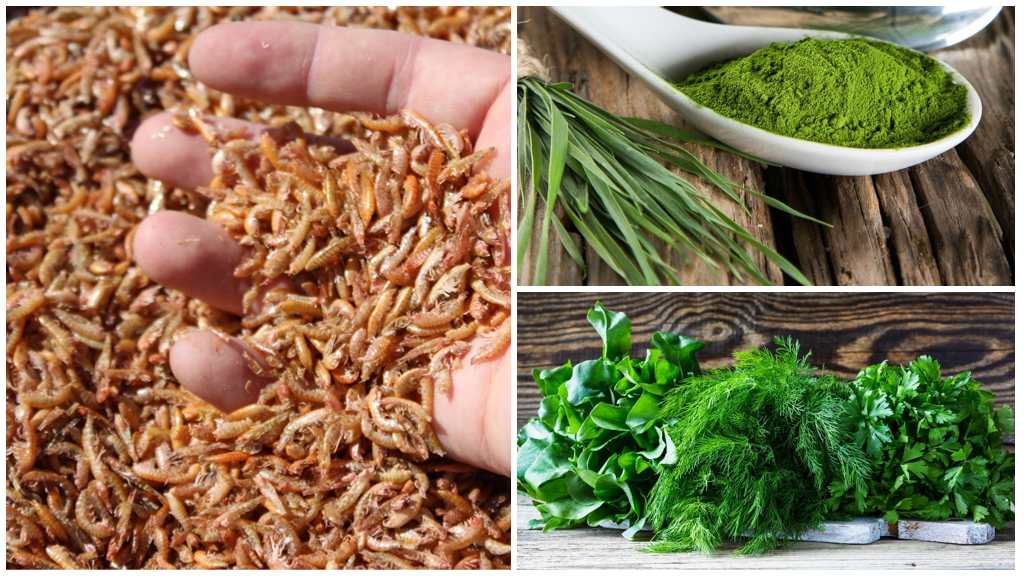
How to feed Turkmen cockroaches:
- daphnia;
- spirulina;
- cat or fish food;
- hamarus;
- lettuce;
- greens;
- apples
- dandelions;
- cucumber;
- crackers;
- peanut;
- oat groats;
- carrot;
- pear.
Important!
The intestinal content of feed insects affects their nutritional value and palatability. It is not recommended to give tartar cabbage, pumpkin, bananas and tomatoes.
Animal protein (daphnia, hamarus) must be in the diet to avoid cannibalism, which is a sign of bitten wings.
Colony enlargement
Propagation of Turkmen cockroaches can occur in the same insectarium. Every 14 days, the female lays the oteka, attaching it to the substrate. After 30 to 45 days, up to 20 larvae appear from the capsule. Young animals do not eat anything for several days - they adapt to new conditions, after which they switch to the diet of adults. As they grow older, nymphs molt and after 4 - 5 months become sexually mature individuals.
- Cockroach content
- Cockroach content
Some breeders leave insects in insects, but then there is a high probability of drying out or the appearance of mold. Others transfer future offspring to an incubator. To create it, you will need 2 containers of the same diameter, but of different volumes:
- Pour warm water into the deepest container.
- At the bottom and sides of the second tank, make very small holes, taking into account the fact that newly appeared individuals could not fall through them. At the bottom, put a damp cloth, a thermometer, place the wraps.
- Place the container with ootekami on a container of water so that the bottom does not touch the liquid.
- Close the structure with a cover with holes.
- Put in a warm place or on a thermal mat. Make sure that the temperature in the incubator is at 30 ° C.
On a note!
To reduce the rate of reproduction and development of Turkmen cockroaches, they lower the temperature to 20 - 22 ° C.
What are dangerous for people
No cases of human bites were reported by Turkmen cockroaches. Concerning the fact that individuals escaping from the insectarium can breed in the apartment and compete prusakamdisputes do not subside. Theoretically, the red runners could create a colony in a person’s house, but in reality there were no such settlements.
Turkmen cockroaches are dangerous for people prone to allergic reactions. Insect excrement is a strong allergen that can provoke an attack of bronchial asthma.
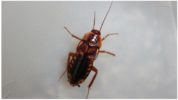
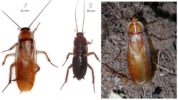
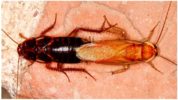
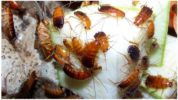
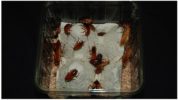
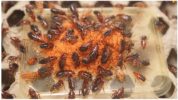
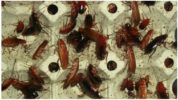
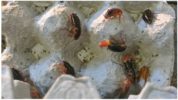
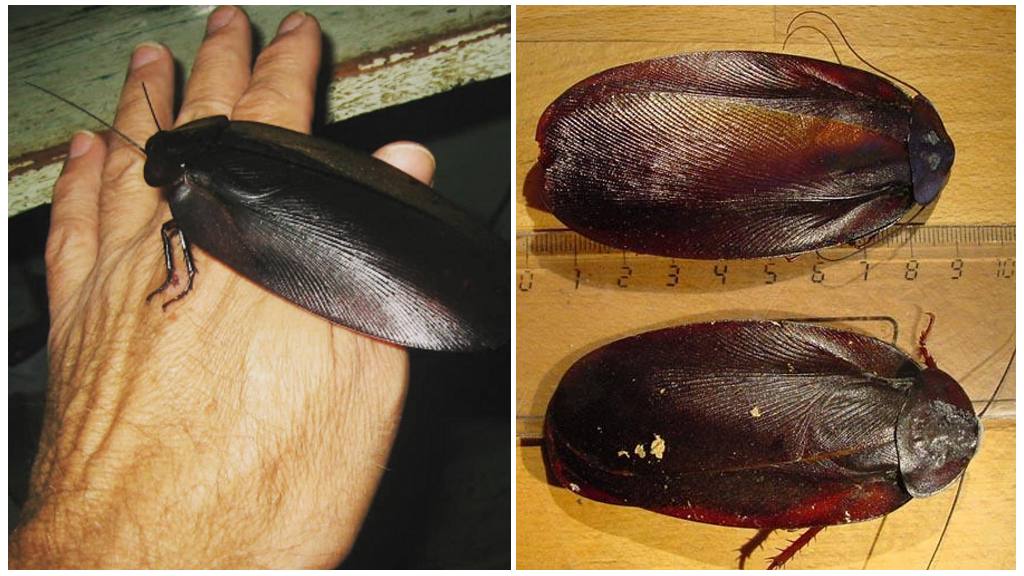
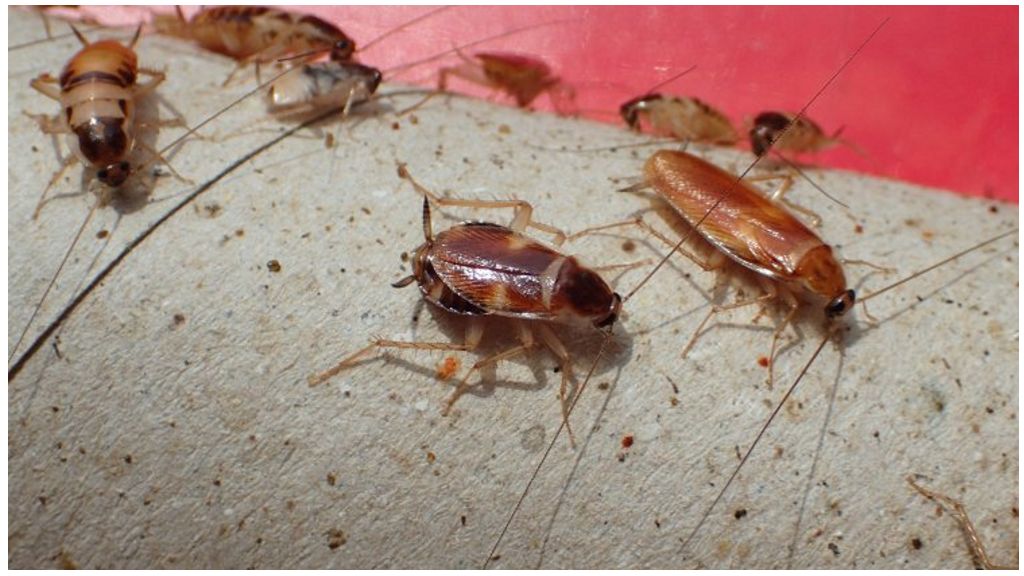
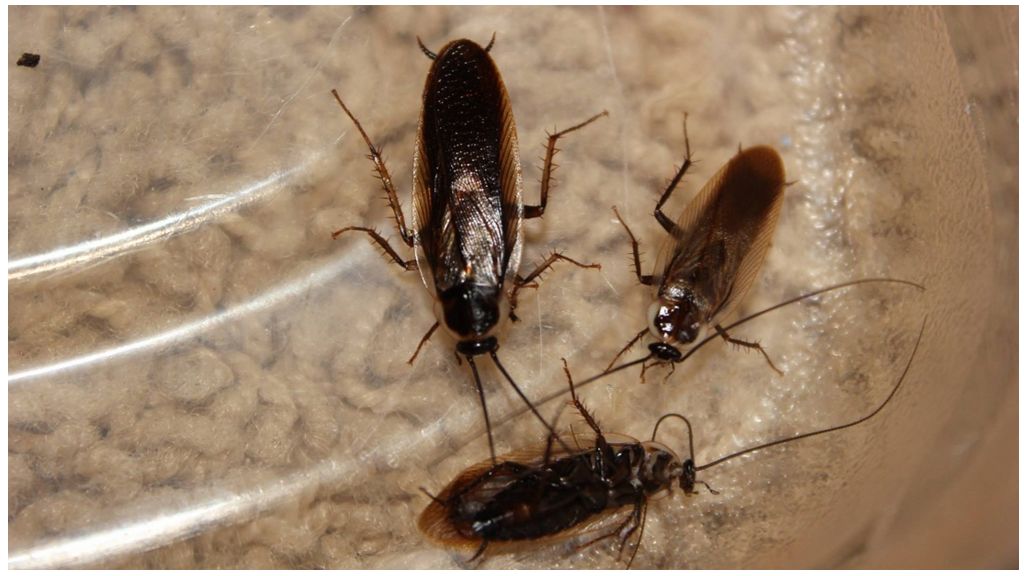
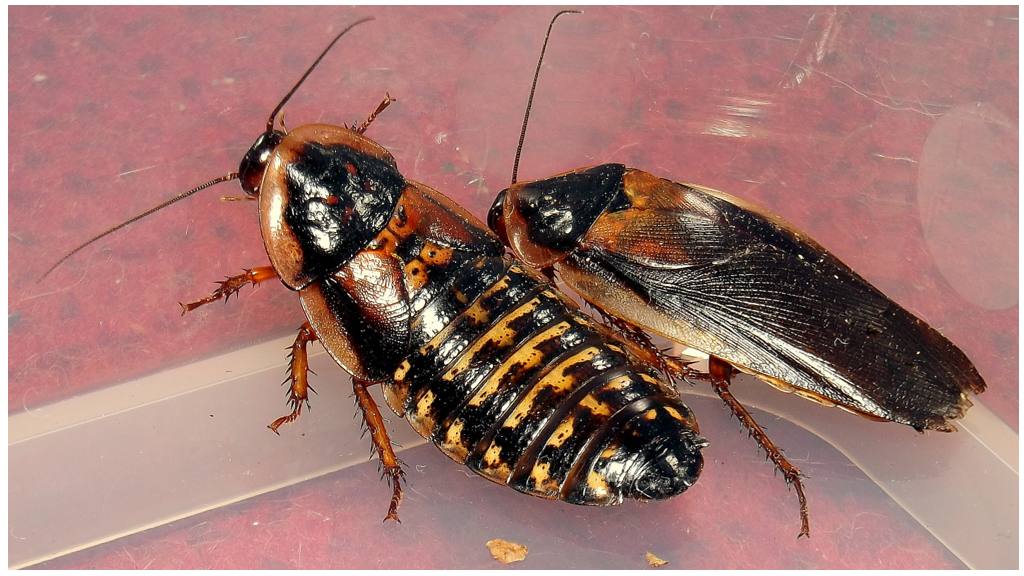
I have been breeding Turkmen cockroaches for my spiders for a long time. Drinking bowls are superfluous. But the substrate is needed. Ooteks in it are developing well.
You do not send ooteks in an incubator?
I just got Turkmen cockroaches.
There was a little water in the mug, they climbed into it, pieces 4-5, they could not get out.
The staircase from the entrance is long, about twenty meters, goes downhill, shakes out the mug and tries to crush to catch up, quickly the bastards run, and after dispersing they spread their wings and fly (plan) didn’t catch anyone, they ran away and flew away